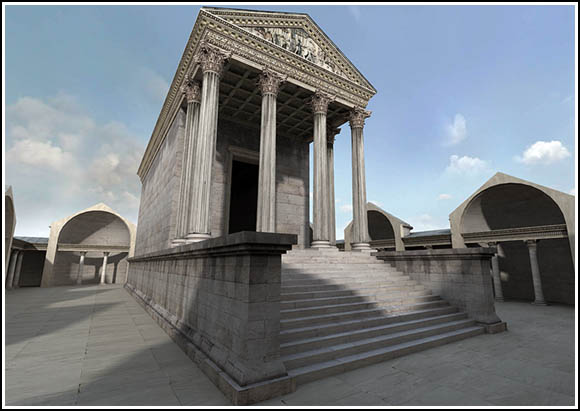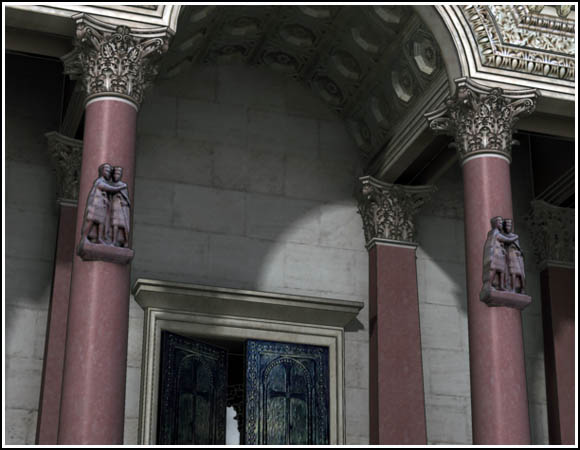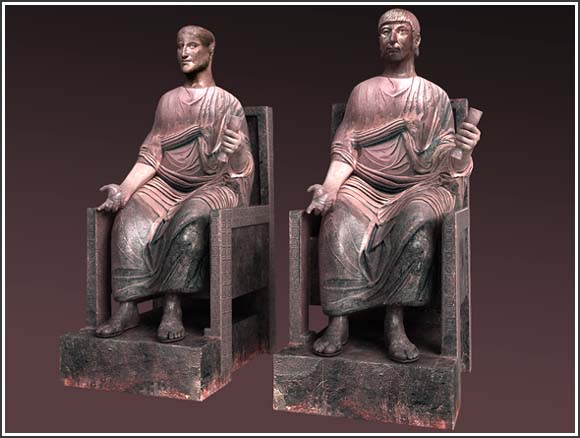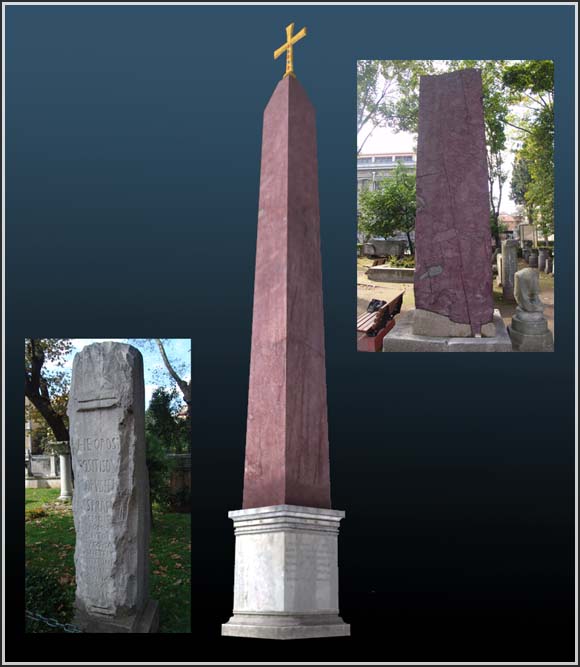


  |
CAPITOLIUM and PHILADELPHION |
 |
 INTRODUCTION
INTRODUCTION
 CONTENTS
CONTENTS
 HIPPODROME
HIPPODROME
 WHAT'S NEW
WHAT'S NEW
 MUSEUM
MUSEUM


 LINKS
LINKS
 AWARDS
AWARDS

The Capitol of Byzantium was without doubt built in the time of Constantine the Great and must have served originally as a pagan or semi-pagan temple connected to the imperial cult.
In the year 407, when it is first mentioned by name, the monumental cross on a column or pillar in front of it fell down during a thunderstorm and was subsequently restored. Its former use, therefore, must have already ended a long time before.

In 425, the Capitol was transformed by an imperial law into an academy of higher education, and the cookshops, which had been set up in the exedrae (apses) of the building, were closed. After this event, the Capitol is mentioned only very rarely. It was probably unused thereafter, but must have existed as a ruin through most of the Byzantine time.

The porch at main entrance on the eastern side rested on great columns of porphyry whose exact number is unknown. Two of them, probably those in the middle, had boards on their shafts which bore the statues of the Tetrarchs. The decoration suggests that these columns were reused and had perhaps originally belonged to the palace of Emperor Diocletian (284–305) in Nikomedeia (Izmit). The two pairs of emperors embracing each other were later regarded as the sons of Constantine the Great, and the whole building was called after them the Philadelphion, the “monument of brotherly love”.
The statues of the Tetrarchs were removed by the Venetians after the Crusader’s conquest of the city in 1204 and can still be seen on the facade of the church of Saint Mark’s in Venice. Their origin from Byzantium is proven by the fact that a broken foot of one tetrarch was found at excavations in Istanbul.

Russian pilgrims, who visited the city in the late Byzantine time, mention also two figures sitting on thrones, made of porphyry as well, probably belonging to Constantine and his father Constantius Chlorus, which broke when the westerners tried to remove them, and were therefore left behind.

A fragment of the white marble base on which the obelisk stood was discovered in the 1930’s immediately west of the Laleli mosque but it has been identified as such only recently on the basis of an inscription part of which survived on it. Interestingly, such a base would fit a porphyry obelisk fragment of which was found in the 1840’s in the Topkapi Sarayi complex and is now in the garden of the Archaeological Museum in Istanbul.


